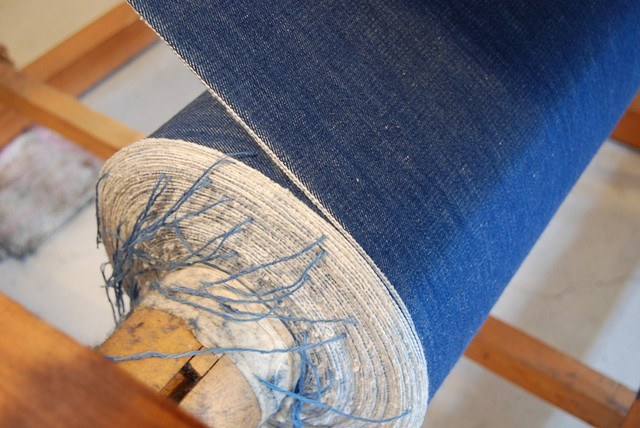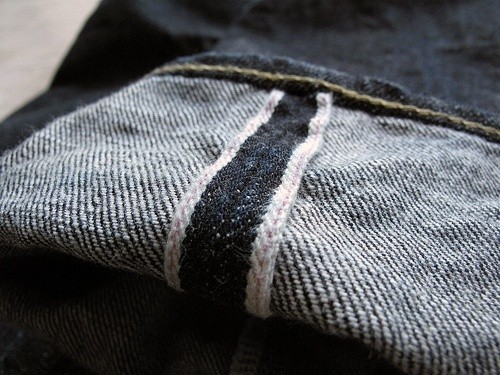Selvedge Denim (also Self-Edge or Selvage)
What does Selvedge Denim (also Self-Edge or Selvedge) mean?
Initially known as ‘self-edge’, the selvedge is the narrow, tightly woven band on both edges of the denim fabric. A selvedge end prevents the edge of the denim from unravelling and shows a clean, finished look.
Old shuttle looms produce denim where selvedges are closed. Alternatively, on larger modern weaving machines, the weft yarn is cut on every pick, resulting in a fringed selvedge.
Selvedge colour varies with the brand and producer. For instance, coloured thread was used by Cone Mills to identify the particular fabric used by it’s major manufacturers. Vintage Levi’s jeans were originally an all white strip and later had a single red striped selvedge. Lee’s had a blue or green strip along one end and Wrangler’s was yellow.
Heddels explains Selvedge Denim (also Self-Edge or Selvedge)
The selvedge refers to the white edge of a piece of fabric that secures the edge of the fabric and prevents unraveling. Selvedge denim are made out of denim woven on an old-style shuttle loom with a continuous weft and a narrow width (usually around thirty inches).
Today, selvage denim is valued for its irregularities and character, and is typically more expensive than regular denim. Selvedges in jeans usually denote high quality denim, albeit there are many factors to consider with denim quality.
Additional Resources
Selvedge denim spun on an old shuttle loom:
Source: flickr.com/photos/fogindex/
Up-close shot of selvedge:
Source: edwinhimself.com

